Cart
You have no items in your shopping cart
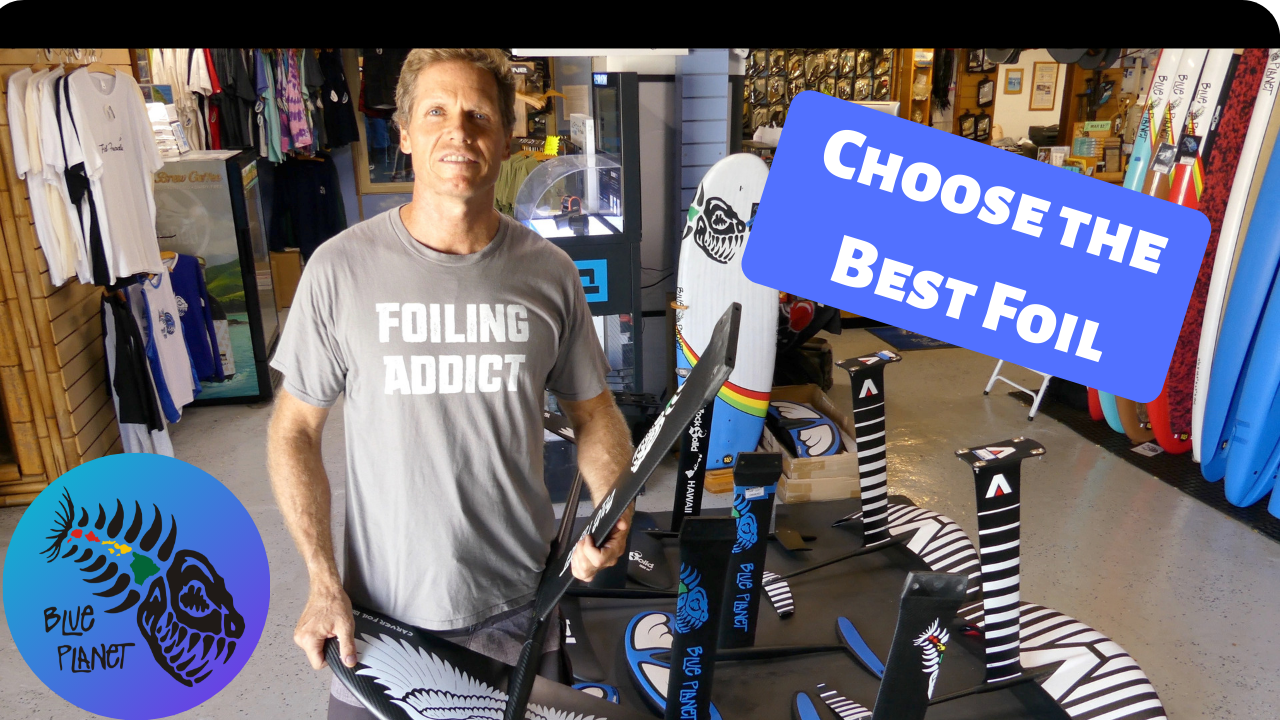
Everything you need to know about surf foil design and construction to make an informed decision
Many customers come into our shop or call us hungry for information about foiling, so we decided to make this post and video to share what we have learned about foil design and construction. Surf Foiling is new to many and it takes a while to wrap your head around the many variables involved. Keep in mind that most design features have both pros and cons. A foil that works great for an expert rider is not always the best foil to learn on. This page goes over the same information as the video with some added details, so watch the video and read the text for the most in-depth information.
I have been foiling for close to 3 years now and foil technology has evolved rapidly over this time. For reference, the video was recorded in August 2019 and many foil companies have come out with refined second or third generation foils that are much better than what we first started on. Foils keep evolving and improving so by the time you are reading this, some of the information may already be outdated, although the general concepts will still apply to understand differences in foil design and construction and we will update the text if new technology becomes available or things change dramatically. Should you wait until the technology improves? No way, you would be missing out on too much fun! There are many great options on the market right now, so for those sitting on the fence, don't hesitate, jump in, foiling is awesome and with the new hand wings it opens up all waterways to foiling, no waves needed, all you need is a little wind. We just got into this fun new obsession and videos on wing foiling are coming soon on the Blueplanetsurf youtube channel, stay tuned.
These are some things I learned from personal experience, from talking to my foil crazed friends, and from listening to Eric Antonson's Progression Project podcast foiling series while I'm driving. If you really want to geek out on foiling, I highly recommend this podcast series: https://podcasts.apple.com/us/podcast/the-progression-project/id1206097336
A) Foil Design
Let's go over foil design first, starting with the front wing:
1) Surface Area: The surface area of the front wing is a good indicator of lift the wing will create all else equal. It is commonly measured as the projected surface area in square centimeters. If you held a light straight over the wing, the projected area is the area of the shadow projected by the wing.
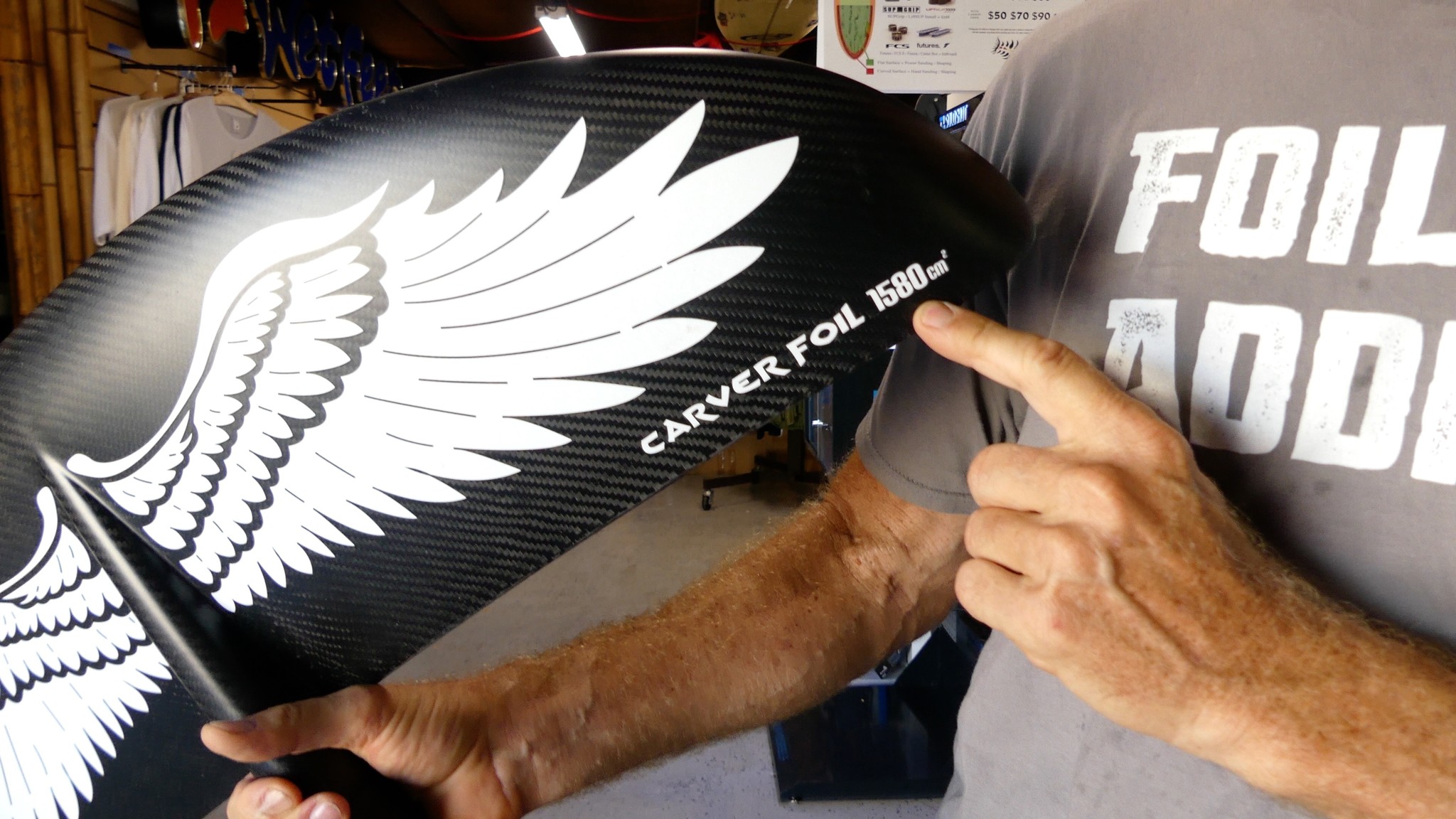
2) Profile: Surf Foils generally have a thicker profile which creates more lift at lower speeds and is more forgiving to small changes in the angle of attack. Foils designed for higher speeds (think kite foil racing) have much thinner profiles. Thinner profiles generally have less drag, want to go faster and are easier to control at higher speeds but also have less lift at lower speeds, drop off earlier when slowing down, are more sensitive to small changes in the angle of attack and usually take more skill to ride.

3) Wing shape: high aspect vs. low aspect shape. This refers to the ratio between the wingspan and the chord (distance between the leading edge and trailing edge of the wing). High aspect wings are wider and more slender while low aspect wings are more stubby and fuller.

This glider plane is an example of a very high aspect wing shape with long, slender, thin profile, flat wings. This wing shape is the most efficient and creates the most amount of lift and the least amount of drag from a given surface area. It has good control at higher speeds but also drops off the foil earlier when slowing down, is harder to control at lower speeds and can be more directional. The efficiency of high aspect foils makes them great for pumping but they also take more skill to control on a wave.
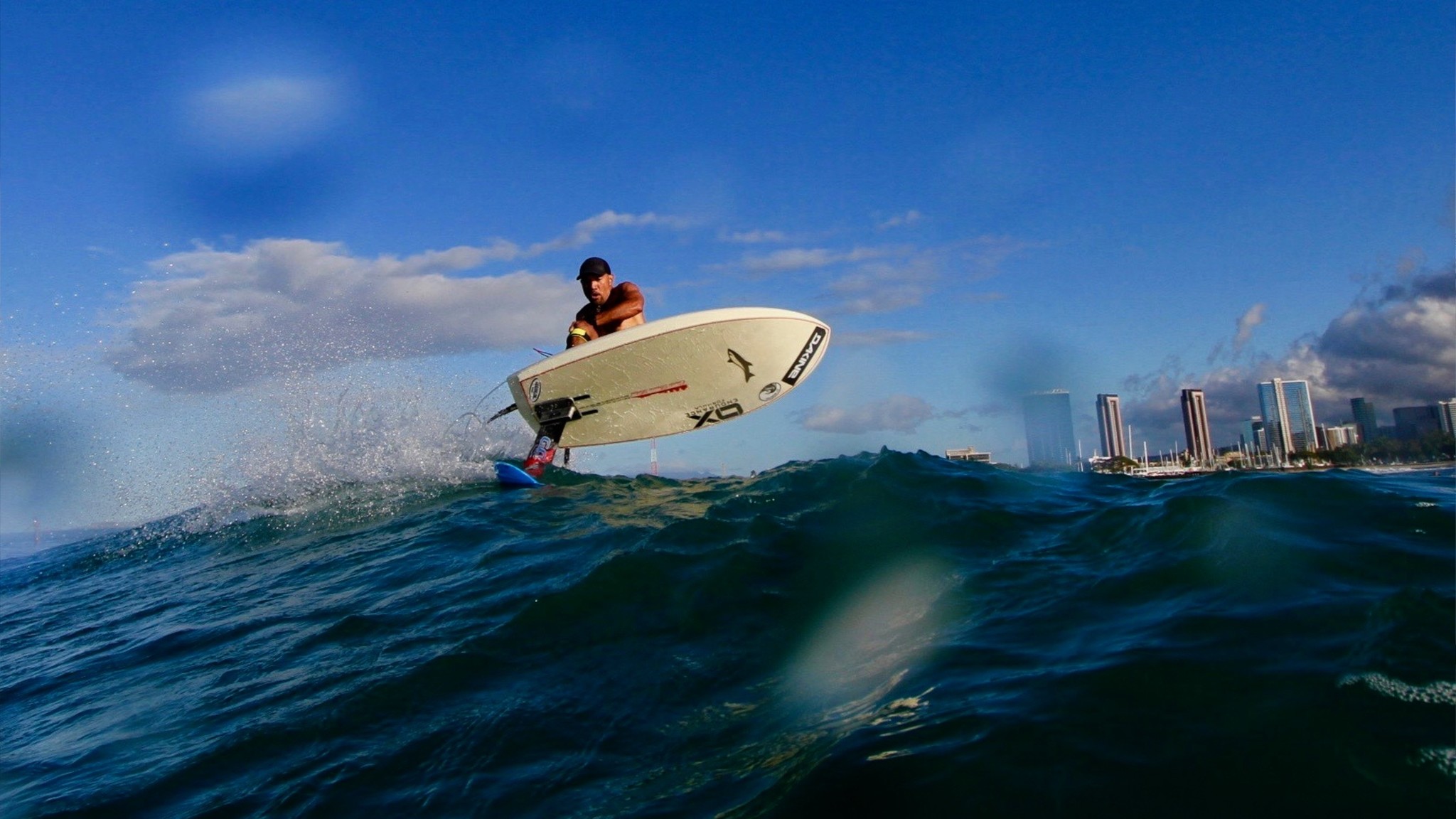
Derek Hamasaki, photo: Reid Inouye
Derek Hama surfs his high aspect wings amazingly well, he likes that he can have half the wing sticking out in steep turns while still being able to control the foil through the turn. His surfing skills are amazing, so just because he can do this does not mean the rest of us mere mortals can.
This is an example of a lower aspect wing that is stubbier with a wingspan to chord ratio of almost 2:1.
Low aspect wings are generally easier to use for beginners, easier to control at lower speeds, create more lift at lower speeds and more predictable and forgiving to small changes in angles of attack.
3) Flat wings vs. curved wing shapes
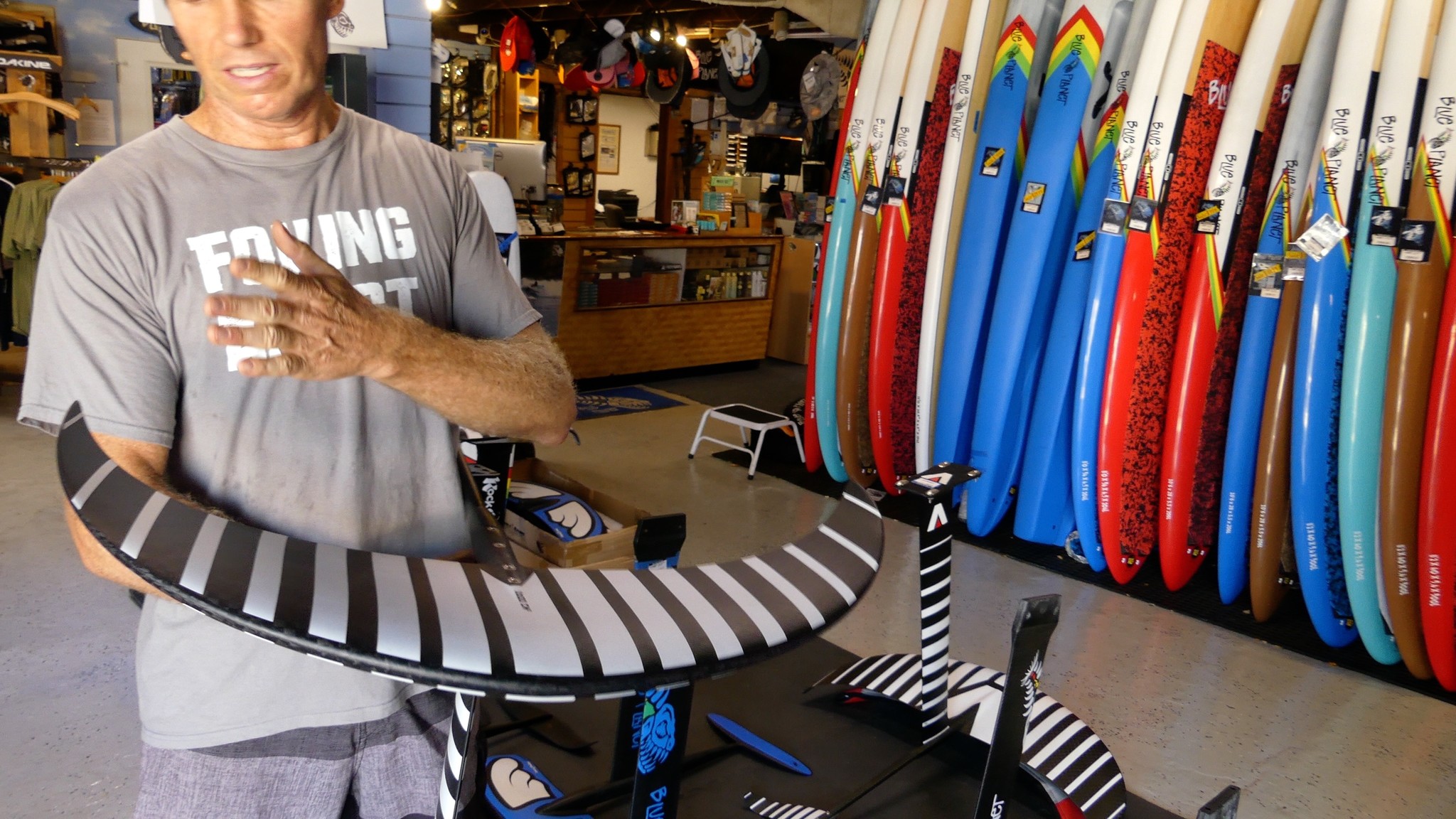
Another thing to consider is the curve of the front wing. A curved wing has a bit of built-in instability and almost wants to go from one turn into the next, which makes curved wings fun to use for carving in the surf. The tips of the wings can also give the wing more directional stability (like fins on a board) that make the foil easier to control. Turned up or down wing tips on the tail wing have the same effect, increasing directional stability.

A downside of curved wings is a smaller projected surface area as the tips do not create as much upward lift. A flat wing that creates upward lift even in the tips is more efficient and therefore creates less drag (although winglets can reduce turbulence at the wingtips).
4) Tail wing size, shape, and angles: A bigger front wing is usually matched with a bigger tail stabilizer wing to balance it out. In general, using a smaller tail wing will create less lift and may require more back foot pressure to balance out the front wing but will make the foil looser (easier to turn) and allow a quicker pumping motion. Tail wing shapes are usually similar to the front wings with the same concept applying: high aspect is most efficient, low aspect can be easier to control, curved up or down wing tips add directional stability and can reduce turbulence off the wing tips. I have not noticed much difference between turned up vs. turned down wing tips on rear stabilizers.

On some foils you can adjust the angle of the rear stabilizer, which allows you to increase or decrease lift without changing the size of the tail wing. Basically, a bigger angle will create more lift at low speeds while less angle will be easier to control and less likely to breach at higher speeds.
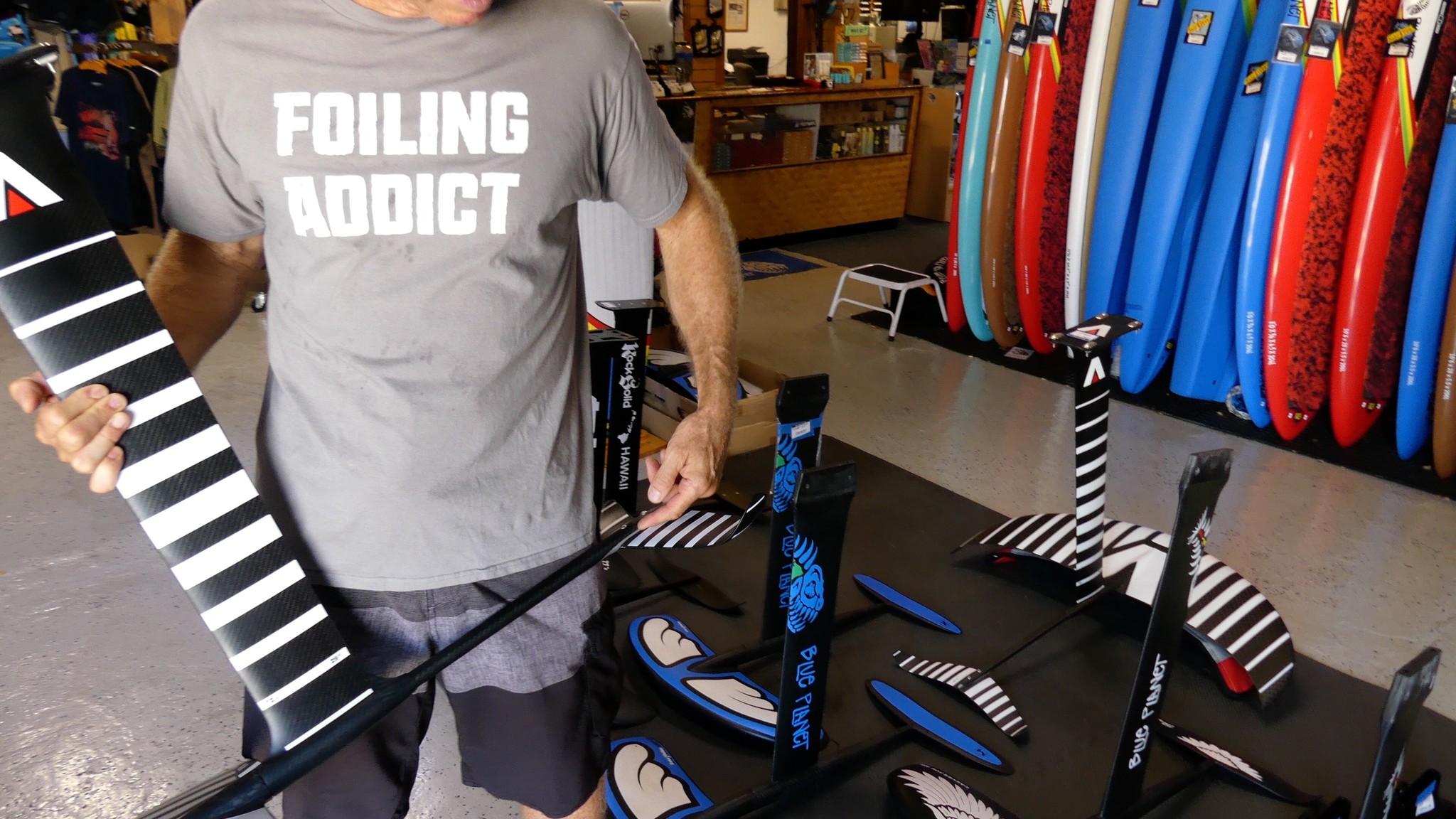
5) Fuselage length: Generally, a longer fuselage makes it easier to control the pitch of the foil (keeping the foil flying at a steady altitude). A shorter fuselage will be more sensitive to slight weight changes and makes it more challenging to fly level but also makes the foil looser, allows tighter turns and more responsive, quicker pumping motions.
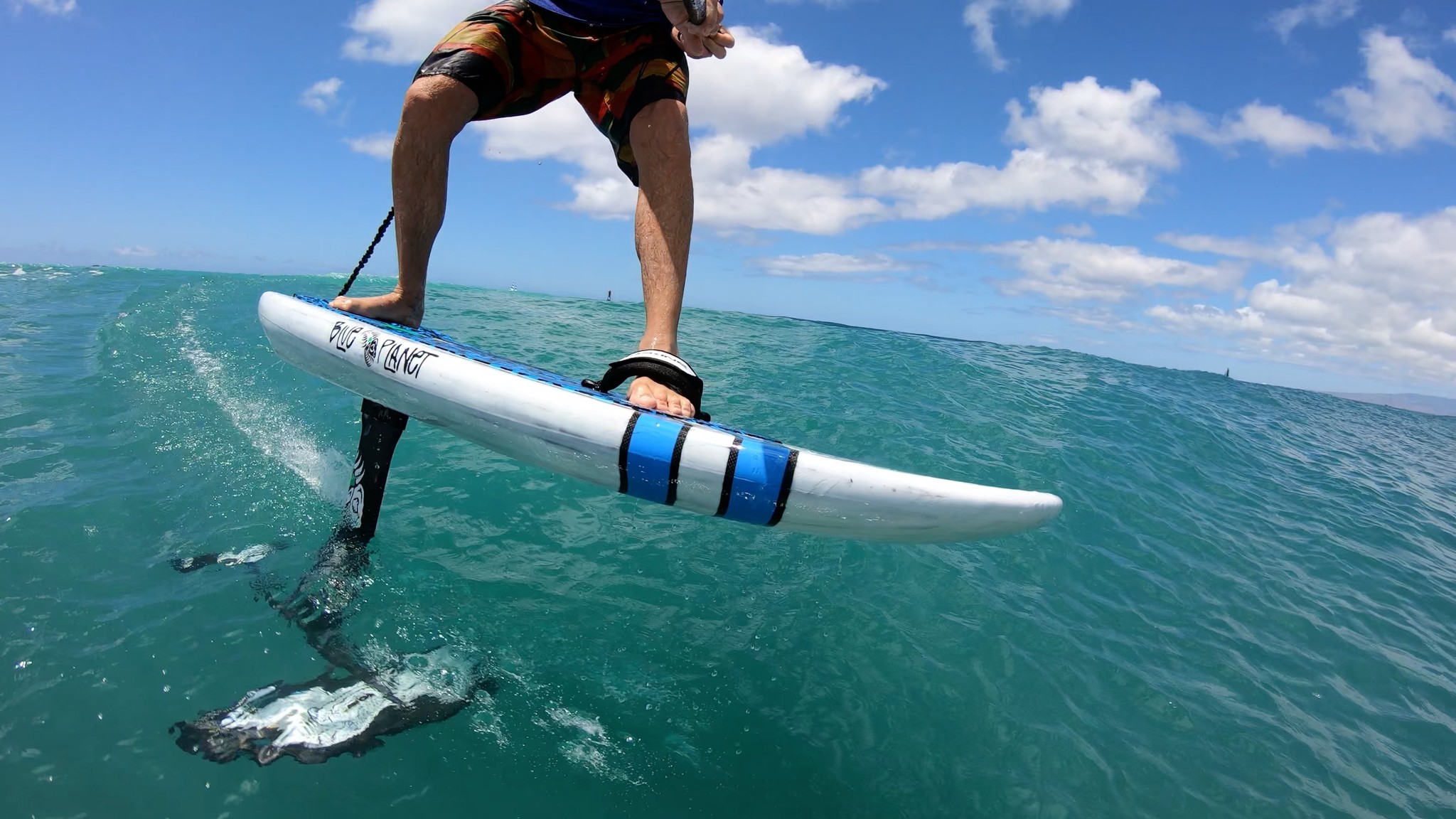
6) Mast length: A longer mast will usually give you more clearance which allows for steeper turns without the rails touching the water, more leverage and slower pumping motions, especially on longer boards, and less likely to breach at higher speeds. Some disadvantages of a longer mast are: it feels more tippy, added weight, flex, and drag, harder to catch the wave energy in smaller waves as the foil is deeper on takeoff. Longer masts are also more likely to hit bottom, so need deeper water spots and when you do breach the wipeout is from higher up and can be more dangerous. Shorter masts are more stable, less dangerous, and highly recommended for beginners. Many advanced riders use shorter masts in the surf as they are easier to control, allow you to surf in shallower spots, have less drag, and catch waves easier. Pumping motions are shorter and faster on a shorter mast. Standard mast sizes for surf foils are 24"-28", longer mast sizes are 28"- 32". Tow in foilers and kite foilers often use longer masts, around 36" - 42". The longer the mast is (and the bigger the foil wings), the more noticeable and important mast stiffness becomes. A mast with a wider base will generally have less torsional flex than a narrow mast making the foil more responsive although this also makes the mast more directional at higher speeds, much like a big fin on a board. For carving turns on a wave, especially with smaller wings, some flex in the mast can be a good thing, similar to flex in a fin that lets you load up the foil and can make carving turns feel more dynamic and smooth. When using bigger wings and longer masts, stiffer masts seem to work better for me, too much flex and bend in the mast and fuselage makes the foil feel wobbly and hard to control. A mast with a thicker profile will generally be stiffer side to side but also increase drag. In carbon masts, the layup and grade of carbon used are very important to achieve both side to side and torsional stiffness and strength. This is a good segway from design to construction of the foil.
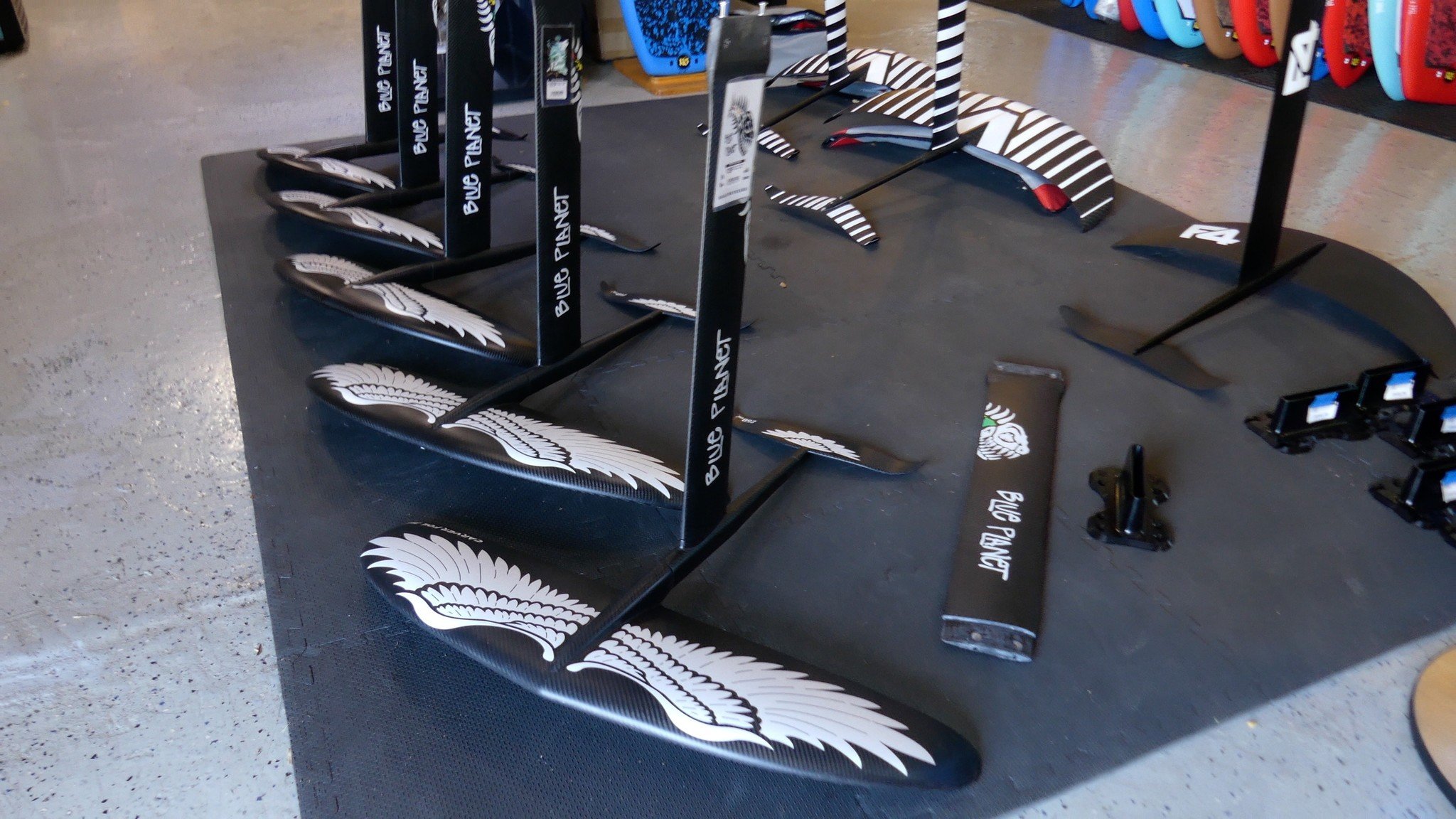
The Blue Planet carver foils come with a 26" mast and a longer 30" mast is available.
B) Construction: along with a good foil design, the construction of the foil is very important to consider for performance and longevity.
1) Materials: most wings are made using molded carbon fiber and a foam core. Keep in mind that the foil is much more likely to touch the bottom than the board, so it needs to be stronger, especially the leading edges and bottom of the foil. Think of it as a fin, you want it to be tougher than the board.
The mast and fuselage are usually made with either anodized aircraft aluminum or molded carbon fiber. The advantages of aluminum construction are: less expensive and relatively strong and rigid. Wide aluminum masts are stiff and have a solid feel with very good board-to-foil control. Disadvantages are: aluminum corrodes in salt water, especially where it makes contact with dissimilar metals and/or carbon. Aluminum foils should be disassembled and cleaned regularly and anti-seize should be used in all screw connections to prevent salt water from getting into the threads. If a screw seizes in the foil, it can no longer be disassembled. Aluminum masts and fuselages can also bend, which makes them unusable and are generally heavier than full carbon foils (as mentioned below, this is not always a disadvantage).
A full carbon foil is made with molded full carbon parts. Carbon foils are generally lighter and have a more lively feel all else being equal but are significantly more expensive to make. There are differences in grades of carbon and how they are laid up inside the mold, so not all carbon foils are equal, there are big differences in construction quality and you generally get what you pay for.
2) Weight: the foil should have a good weight to strength ratio. A lighter foil will make high-performance surfing, aerials and pumping easier and more efficient as long as it is strong enough and does not have a lot of flex. A heavier foil is easier to control, has a solid feel in the water and makes the board feel more stable. I tested a prototype wing that was CNC cut from a solid block of G10 fiberglass. It weighed over 30 lbs and I thought it would be too heavy to work but to my surprise, it felt great in the water, very smooth and easy to control and great in choppy water. So some weight in the foil is not always a bad thing.
3) The weakest link: A foil has a lot of leverage and puts enormous forces on the gear, especially when carving, pumping or getting worked in the waves. When a part fails, you know that this was the weakest link in the system. Even if this weak spot does not fail, it will cause flex and instability in the system. Often the weakest link is the board, not the foil. We have seen a lot of box failures, which is why we developed the patent-pending Foil Strongbox. If plate mount boxes are only connected to the bottom of the board (even with a high-density foam insert), they will put a lot of force on the bottom layer of glass and can cause cracking, delamination and breakage. The area on the board between the front foot (crucial to controlling the foil) and the box also needs to be strong enough to transfer the energy from directly from the feet through the board and box, through the mast and fuselage, to the front wing without much flex and lost energy.
Assuming the board is strong enough, common weak spots on the foil itself are
a) The connection between the front wing and the mast: many fuselages are not strong enough in this area which causes flex, material fatigue, cracking and eventually breaking.
b) The mast to fuselage joint, this joint needs to be tight, stiff and strong.
c) The mast to board joint is another common point of failure.
Make sure the foil you are buying is well constructed and reinforced in these critical areas.
Please leave a comment if you would like to point out other "weakest links" you have found in your setup.
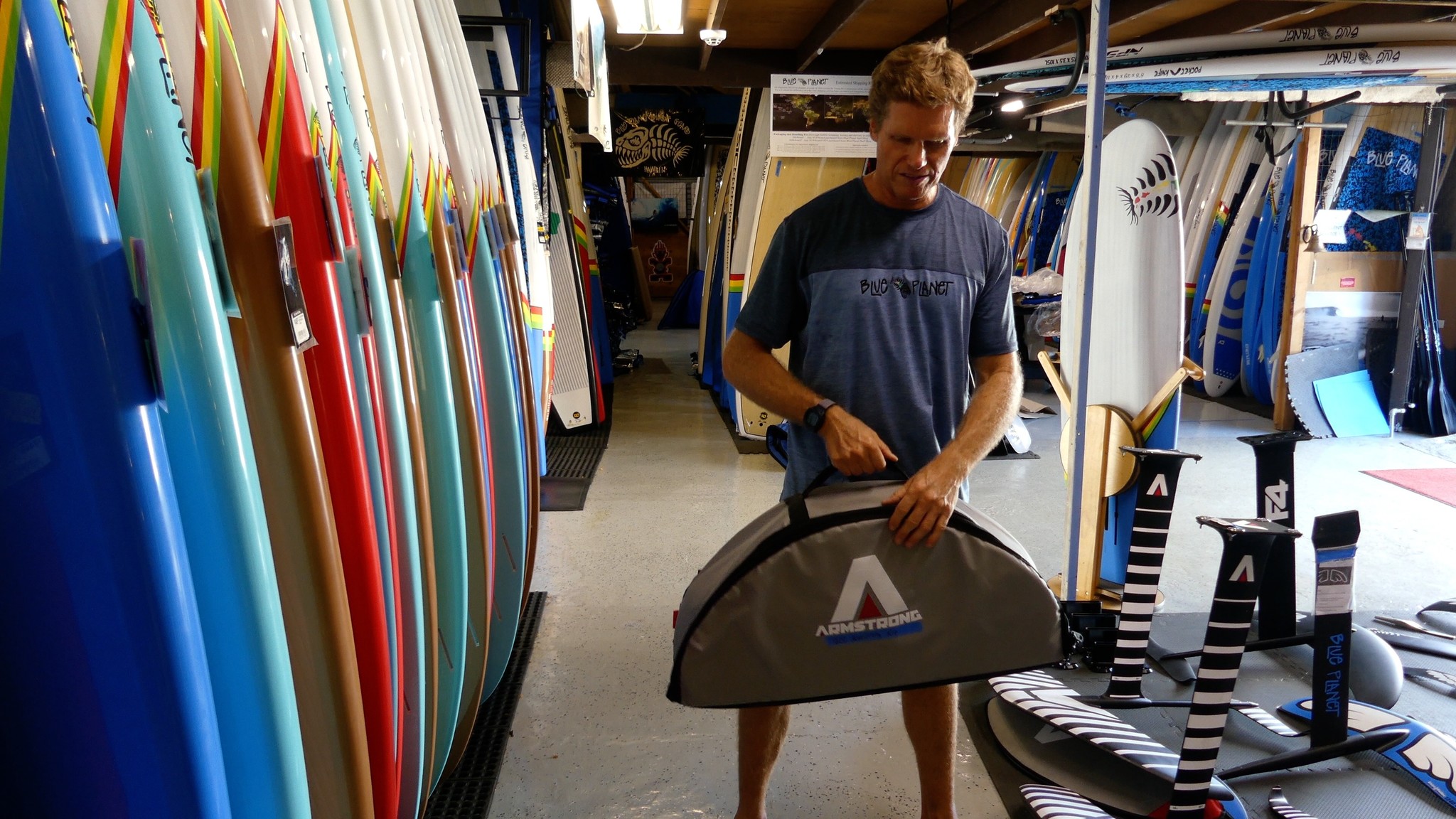
Foils that come apart are easier to travel with, the Armstrong Foil fits into this small travel bag.
4) Connections: Common wing to fuselage joint connections are:
a) Screws that compress the wing against a flat surface on the fuselage. Advantages are easy assembly, easy to fit and interchange wings. The main downside of this connection is that when screws are not completely tight, the wing starts to wobble which puts additional stress on the joint and makes the foil hard to control.
b) Tapered male to female connections with set screws. Advantages: tight fit even if screws are not super tight, fewer chances of flex and wobble. Disadvantages: harder to assemble and disassemble due to tight fit, usually requires the use of a rubber mallet. Different wings have to match the fuselage exactly to be interchangeable, slight variations can make different generations of foils incompatible or require sanding or shimming to fit well.
5) Modularity: being able to swap wings and make adjustments, as well as being able to fully break down the foil for transportation is a big advantage of foils with joints between fuselage, wings, and mast. Some manufacturers eliminate some or all of the joints. The advantage of fewer joints is lighter weight to strength ratio and fewer potential points of failure. The disadvantages are a larger size for transportation and fewer adjustment options.
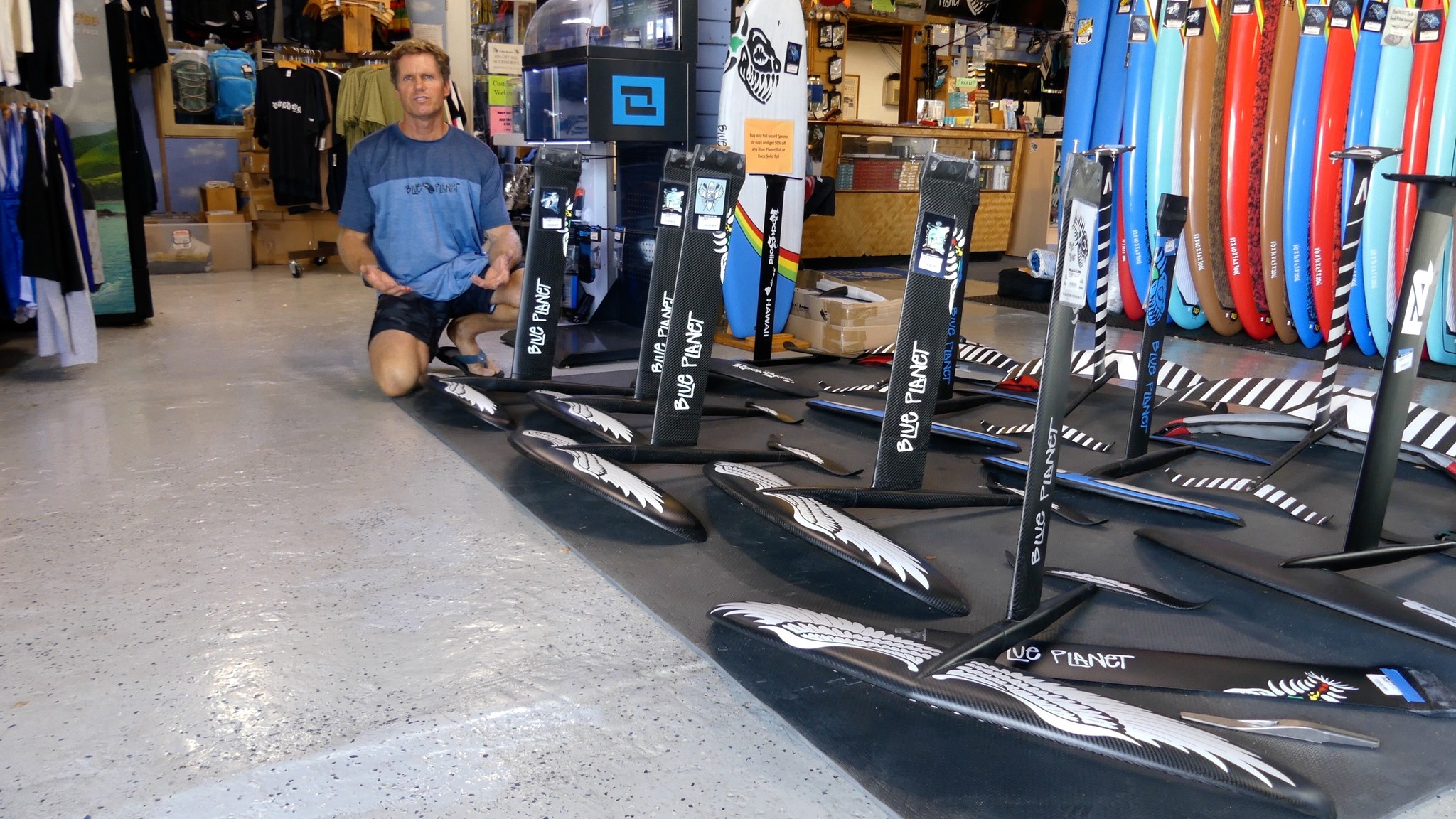
A modular foil system gives you more options.
6) Threads and corrosion: Screws going directly into carbon threads will not have enough bite and wear out quickly, so metal screw thread inserts are needed. As mentioned, aluminum is light but will corrode in saltwater if in contact with stainless steel screws and carbon. Stainless steel is relatively heavy and can also corrode over time. Titanium is the best material as it does not corrode in saltwater and is relatively light but is very expensive. For longevity, choose a foil with titanium or stainless steel thread inserts.

The Blue Planet Carver foils have a non-corrosive titanium insert to strengthen and stiffen the connection between mast and front wing.
7) Proper installation: Before going into the water, always check to make sure all screws and connections are tight with no play or wiggle anywhere. Any looseness, play or flex will make it much harder to foil and will put more stress on the flexing joints.
8) Safety: The trailing edges on some foils are very sharp and dangerous (speaking from experience- it's not uncommon to bang your shin into the trailing edge when you are starting out and it can get a lot worse in a wipeout). I highly recommend taking the sharp edge off the trailing edges with sandpaper for safety. Start with a rough grit and finish with a finer grit, thank me later. You can also get rid of humming noises by sanding the trailing edges of the foil. Kite foil racers sand their foils to razor-sharp trailing edges for maximum performance but for surf foil speeds, having a slightly dull trailing edge will not have a noticeable impact on performance.
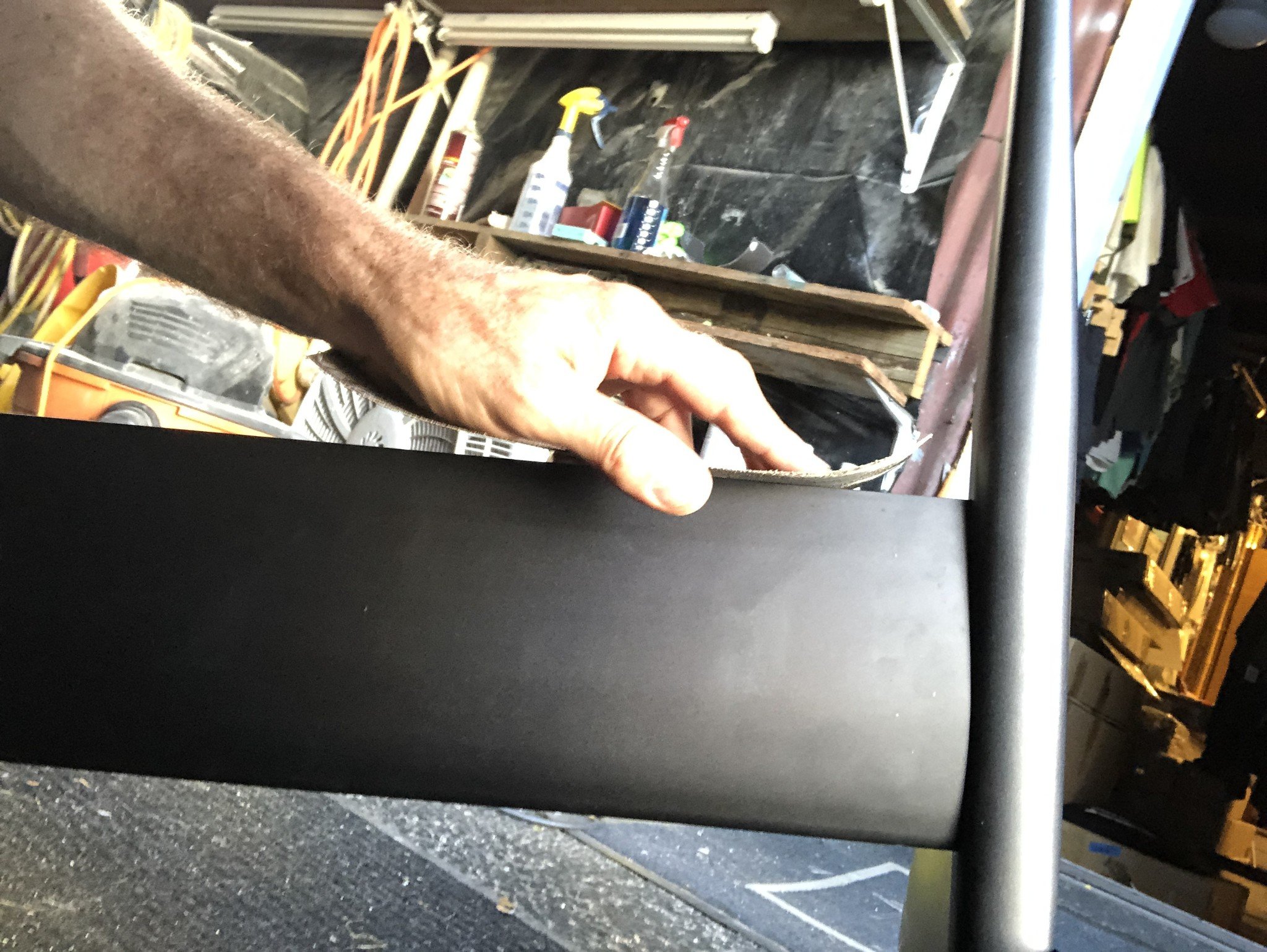
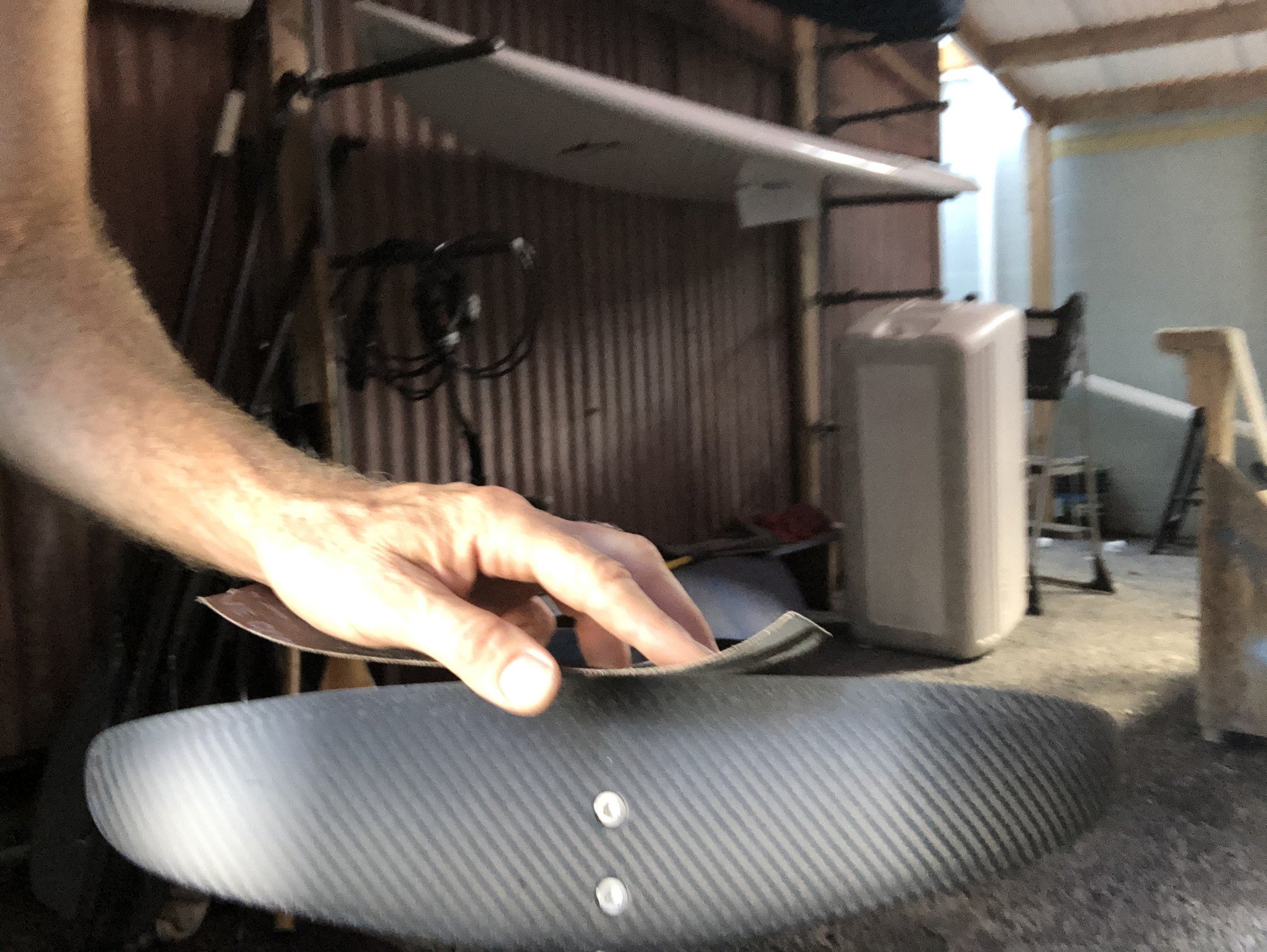
The trailing edge on some aluminum masts and tail wings can be razor-sharp, sand them down for safety,
9) Different foils for different uses: This post covers surf foils that are fun to use for many applications, including towing behind a boat, wake foiling, kite or windsurf foiling and the super fun new sport of wind foiling. They are generally designed to have a good amount of lift at a lower speed. The speed range is somewhat limited as they become harder to control at very high speeds. Some foils (like kite foil racing foils as mentioned) are designed to fly controllably at higher speeds. The downside of these high-speed foil designs is that it takes more speed to lift them out of the water, making them suitable only if towed by a kite or board/ jet ski. For downwind foiling, bigger wings are needed to create enough lift at low speeds using mostly paddle power and a bit of push from the bumps. This takes some serious skills and should only be attempted once you are proficient at catching small, unbroken waves and pumping on flat water to connect bumps without coming off the foil.
For downwind racing, the big challenge is to design a foil that has both enough low-end lift to get up on a foil early with little push as the start and finish of downwind races are often outside the wind line and sometimes even upwind as the Molokai race finish. At the same time, the downwind racing foils need to be controllable at the very high speeds of open ocean groundswells to be competitive. Combining low-speed lift with high-speed control is an interesting problem and I think we will see a lot of development in this area that should also benefit the average user. Should you wait for the next generation of foils to come out before pulling the trigger to try foiling? No, don't put it off any longer and start flying over the water, you won't regret it.
I hope this is helpful, I might add or edit some of this information as I learn more and your comments are most welcome. I prefer answering questions in a public forum so others can benefit from the answers, so instead of sending me a private message, please ask in the comments here on our website or on the youtube channel, thank you.
Aloha, Robert Stehlik
For more information, watch this video about foil board setup including what kind of board to use, where to place foil, foot placement, and using/ installing footstraps:
For more information on the Armstrong Foil design and construction, watch the interview with Armie Armstrong here: https://www.blueplanetsurf.com/blogs/news/armstrong-foils-interview-ride-report-and-new-zeal/
Almost all front wings foils on the market use an anhedral design, a design that promotes instability! This design is only good for advanced surf and wave riders that require snappy rolls and high maneuverability, it is not a design for SUP, Wing or Wind foiling which would greatly benefit from the stability of a dyhedral wing design. A dyhedral designed wing would greatly help the beginner SUP, Wind and Wing foilers, yet there are none on the market! Funny thing, there are a couple of research papers on the internet that studied the ideal design for a hydrofoil, comparing anhedral, flat and dyhedral designs, they conclusions the dyhedral foil design is the design of choice, more stable less drag and most efficient. Build some dyhedral wings and you may corner the market for SUP, Wing, Wind and beginners foilers!
Cheers,
Help--I want to get a foil for my husband to use on our lake in Minnesota. We don't have waves, but a foil would be perfect for all the bays of Lake Minnetonka. I believe I would want a foil that's for a beginner, stable, easy to ride.
Best to look for a used entry level board to start, then get a smaller high performance board once you have mastered the basics.
Can you get a foil surfboard for less than $400? I have a very tight budget and when i saw a video about foiling, i immediately wanted to start. Thanks
We only have the 24" mast left for the Easy Foiler.
Thanks for the comment. I have also found that high aspect foils seem to work better with flatter pumps, I'm not sure why that is.
Hi Robert,
I just got a used 2019 Foil Easy Foiler. Is there any longer mast (25 inc and up) available? Thanks.
Hello from the land down under Gold Coast to be exact, I've been hooked on foiling ever since my son showed me a video of Kai Lenny foiling back in December 2016 but back then you can't buy a foil system here, I searched hard and the closest thing I can find was a Carafino kite foil.
We tried hard towed behind a boat but none of us was able to ride it and so was all the skiers in the ski club where I bought the foil rig from they weren't kidding when they said it was impossible to ride.
Being an old timer (66) and have a life time of addiction to anything that flies I studied this Carafino rig and came to the conclusion if this thing was to fly it not going to be efficient.
Off with its wing, off with its tail and made wing and tail using a planes air foils and we started flying, the chase for efficiency, stability, control-ability and pump-ability has started.
To this day I still make my own its version #7 now and evolving all the time I'm still looking for that holy grail of a good all rounder.
Its a hobby a challenge and it keep me going but one thing eludes me right from the beginning, to pull the hydrofoil rig at say 17km/hr with an 85kg load it only takes just under 3kg of force to keep it flying now a person on a bike will be able to pull that for quite a distance even at my ripe old age I can ride 50km at 25km/hr no trouble on flat ground of course.
But when I try to pump the foil 75metres or so and i'm running out of puff where is all this energy going?
Why is some foils has to be pumped with distinct porpoising while some can be pumped quite flat?
Curious,
Revine
Thanks for the comment. Pumping on flatwater requires advanced skills. For dock starts you need a big, efficient foil and small foil board but it's very challenging to learn without any foil experience. Wing Foiling is a good way to learn foiling if you don't have a boat or waves.
All you need is wind. For wingfoil packages, please check out: https://www.blueplanetsurf.com/blogs/news/wing-foil-board-package-deals-at-blue-planet/
Hello!
I saw a video today about foilsurfing and I immediately wanted to try it out. But I have some questions before I can have a board.
My situation: I live in Estonia, where is no waves and I do not have a boat also. That is why I like to foilsurf, because i saw that it can be done only by just pushing movement.
What kind of board I should get myself for this kind of action? Foilsup, foilsurf, foilkite, foilwind? What is the difference between them?
Which foils and stabiliser i should choose? A wide, narrow, thin, thick, large, small, wavy, with curved ends etc.?
What kind of mast length I should choose?
My goal is to get the feeling of riding easily at first by pumping and then if I will be advanced, I can always change them.
I have surfed, SUPped, and windsurfed a little also before.
Sincerely,
Joosep Sarapuu
Sounds great and check out our Youtube page, we are constantly posting new videos with info.
Mahalos
Hello from TX. Thank you for sharing your knowledge and experiences! I am going to have to check out foiling now!
I love all your videos and products guys. I'm working on something really cool for foil pumping and will share photos and video soon. A little about the details here https://www.diy-electric-hydrofoil.com/foilflukes-new-way-transportation/